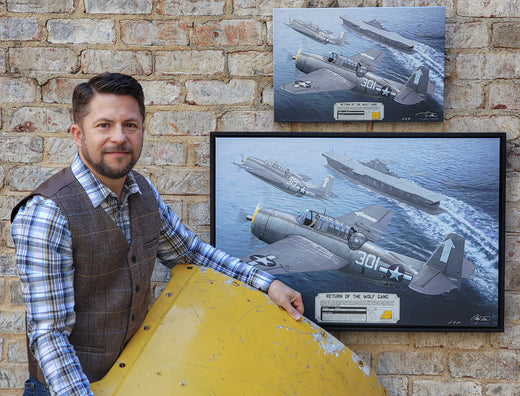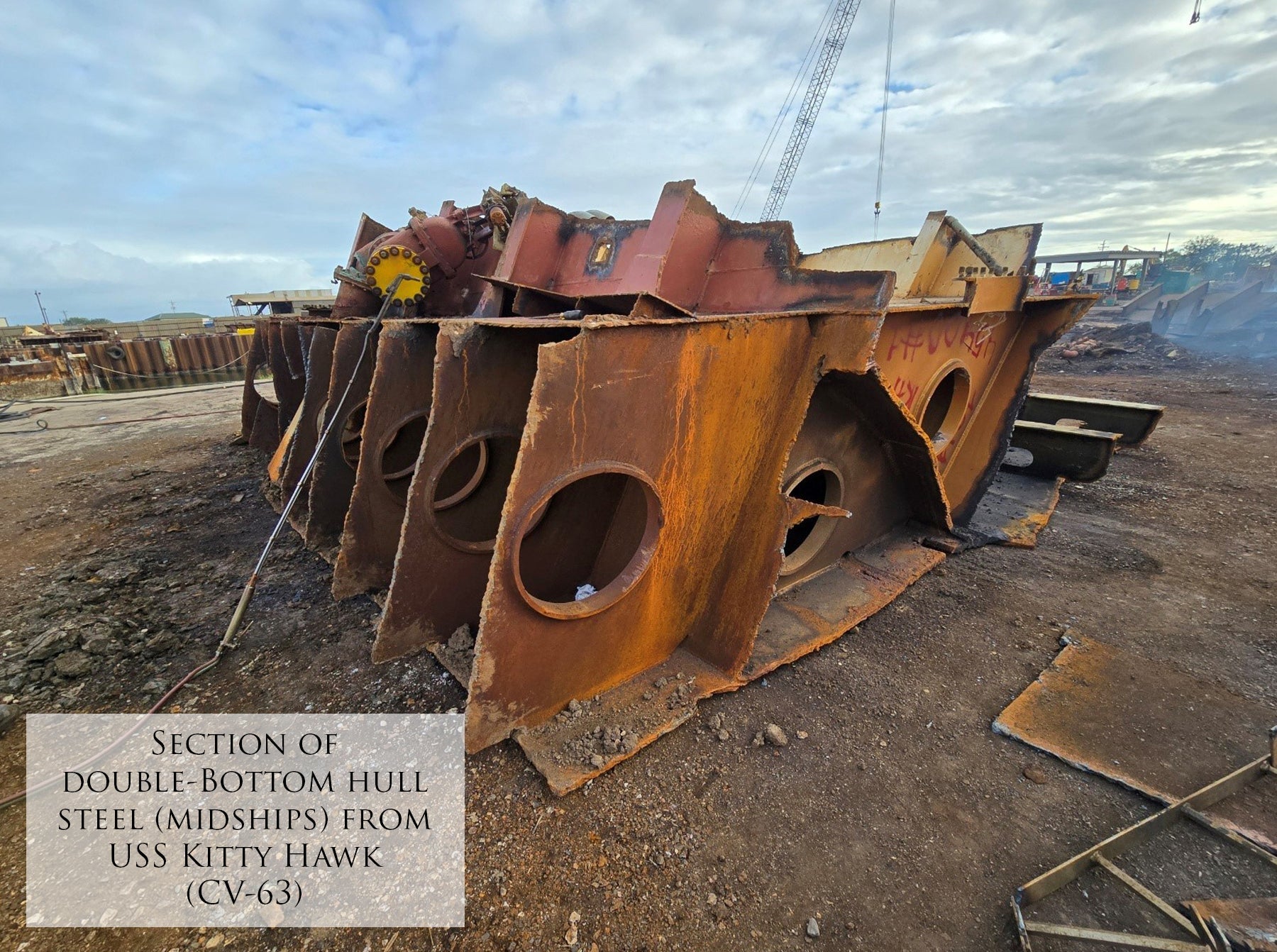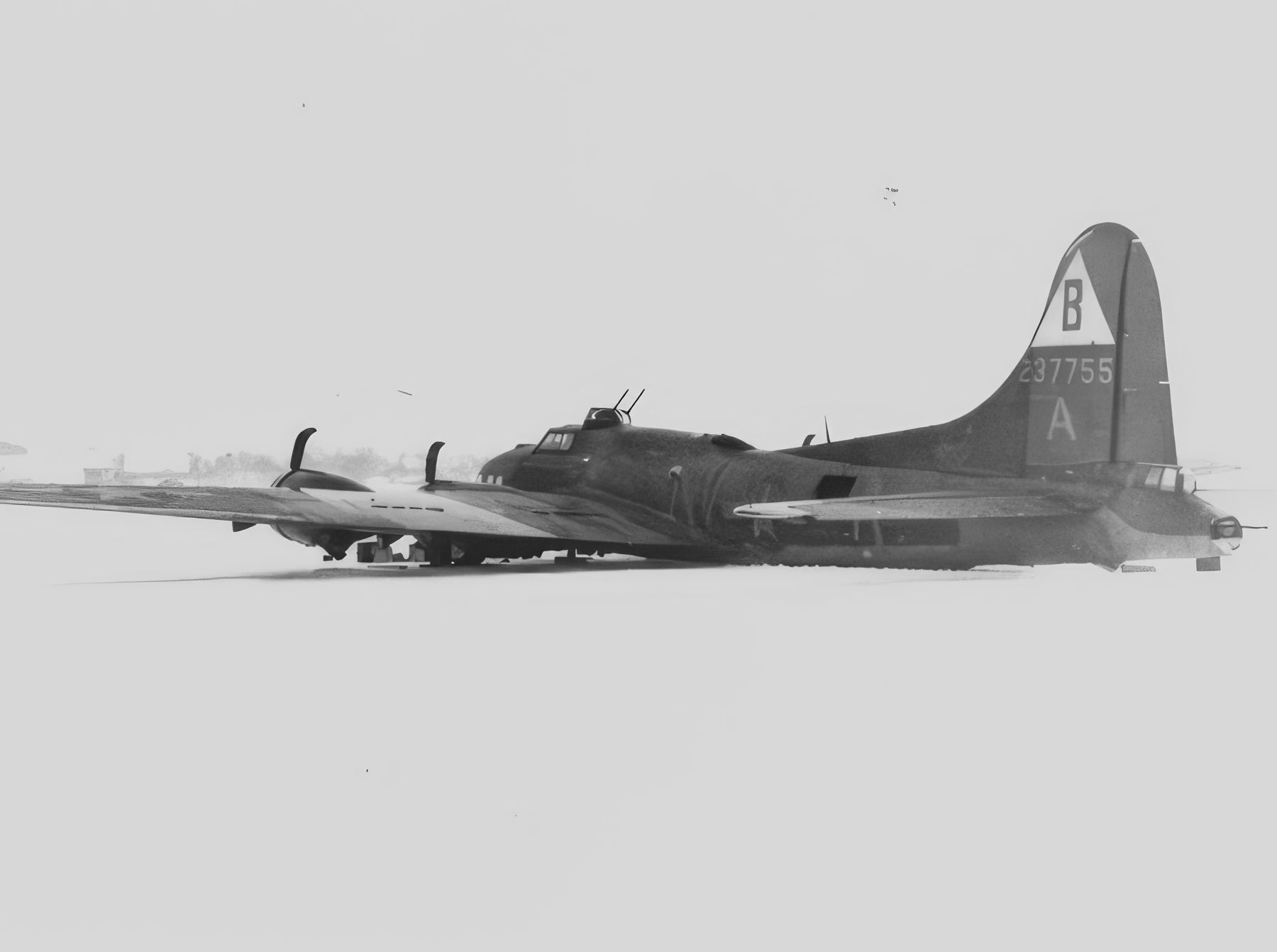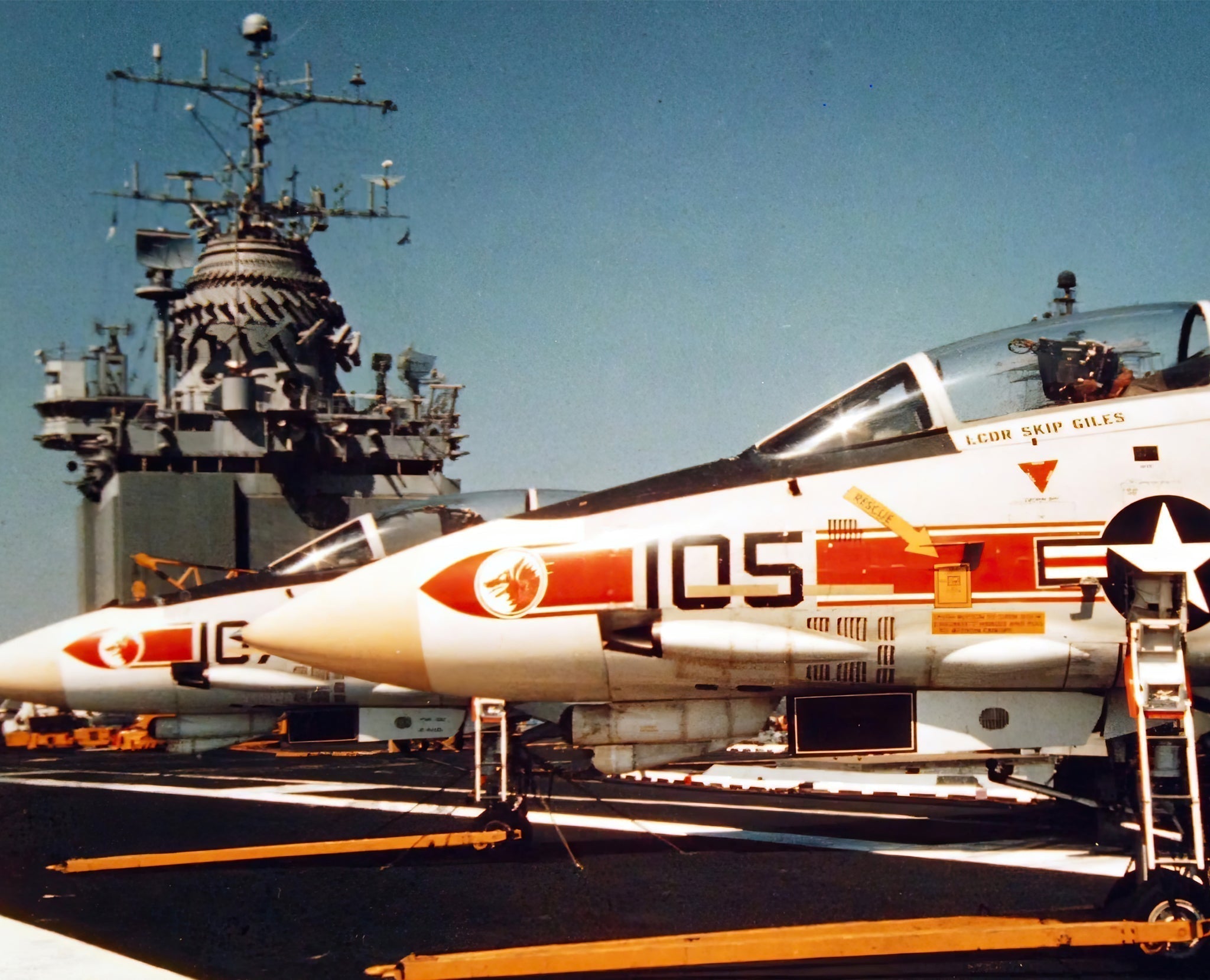This Fine Art Print by Artist Craig Tinder pays tribute to the pilots and crews who flew the perilous bombing and torpedo bombing missions with the TBF/M Avenger. This Limited Edition Canvas Print includes an actual fragment from the lower cowl panel for the oil cooler intake of a TBM Avenger.
Details About the RELIC:
This relic fragment originated from the lower cowl panel for the oil cooler intake of a TBM Avenger from one of the 7,500 aircraft built by General Motors. This aluminum cowl panel, which measures 27" x 37", was acquired from the DeLand Naval Air Station Museum during the static restoration of TBF Avenger (BuNo. 01741). Given the manufacturing differences between the TBF and TBM-built Avengers, this panel was unable to be used in the restoration of Avenger 01741.
 Aluminum cowl panel from TBM Avenger used as relic in "Return of the Wolfgang" limited edition prints
Aluminum cowl panel from TBM Avenger used as relic in "Return of the Wolfgang" limited edition prints
 Artist, Craig Tinder, display the size of the TBM cowl panel
Artist, Craig Tinder, display the size of the TBM cowl panel
 Size of lower cowl panel compared to 30"x20" framed canvas
Size of lower cowl panel compared to 30"x20" framed canvas
The Story Behind the Print:
19 February 1945 - During the U.S. Marine assault on the island of Iwo Jima, the skies above were filled with protective air cover provided by units like Torpedo Squadron VT-84, known as the "Wolf Gang." Flying TBM-3 Avenger torpedo bombers from the USS Bunker Hill (CV-17), VT-84 played a crucial role in supporting the amphibious landing by strafing enemy positions and delivering close air support to the Marines below. However, the cost of these missions was high. Low on fuel and having sustained damage from both flak and small arms fire, the Avengers began returning to the Bunker Hill, many barely making it back aboard.
 USS Bunker Hill - CV-17
USS Bunker Hill - CV-17
VT-84’s actions on this day were part of the larger U.S. strategy to secure Iwo Jima, a critical stepping stone for the eventual invasion of mainland Japan. The battle was fierce, as Japanese forces heavily defended the island with entrenched positions and artillery, making air support essential for the success of the landing operations. The Avengers from VT-84, despite the risks and damage sustained, provided vital air cover and ensured that the Marines could secure the beachhead.
 VT-84 TBM Avenger White 301 - Served as inspiration for the "Return of the Wolf Gang" artwork
VT-84 TBM Avenger White 301 - Served as inspiration for the "Return of the Wolf Gang" artwork
Later in the war, Torpedo Squadron VT-84 would further distinguish itself during the final stages of the Pacific campaign. The squadron played a key role in the sinking of the Japanese super battleship Yamato on 7 April 1945 during Operation Ten-Go. VT-84 was credited with delivering nine direct torpedo hits that helped cripple and sink the massive warship, the pride of the Imperial Japanese Navy, marking a decisive moment in the battle for control of the Pacific. This accomplishment cemented VT-84's reputation as one of the most effective torpedo squadrons in the U.S. Navy during World War II.
Learn more about Grumman, General Motors, and World War II Mobilization for TBM Avenger Legacy, Click Here
To purchase or see similar items, visit here.
Commissioned by Museums, Treasured by Collectors





Share:
Legacy of Sacrifice, the story behind "Clearing the Path to Utah"
Pioneering Space, the story behind "Space Transportation System-1"